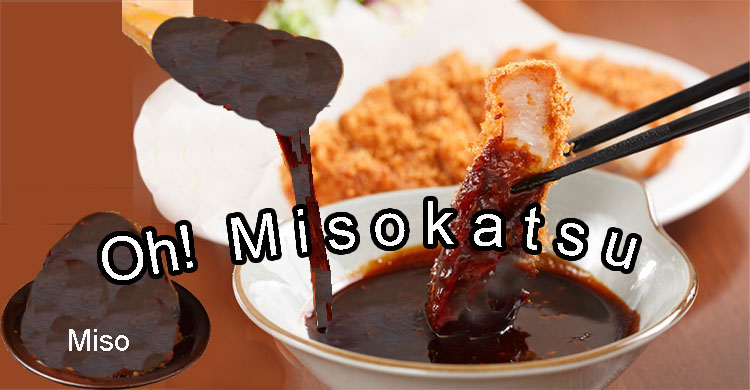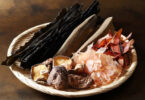Hello everyone how are you feeling? Today’s subject is “Miso” (Bean paste ), which is one of “Cool Japan” foods we’ve enjoyed at every meals.
Contents
Miso has supported the history of the culinary for over 1,300 years
Miso is a “seasoning” which is absolutely necessary for us Japanese, it is also known as “nutritious soy fermented food”.
It is a paste made from fermented soybeans often mixed with other ingredients. It’s a versatile condiment available in many varieties.
Let’s take a look at history as to how long it has supported Japanese kitchen and how beneficial to our health.
What’s Miso (bean paste) ?
Bean paste is a fermented food, made from soybeans mixed with salt and the fermentation agent known a koji (yeast or fermentation starter), which is made from grains such as rice and barley or soybeans.
It is used in virtually every aspect of Japanese cooking. By far the most common use is in miso soup. Rice and miso soup are the cornerstones of the traditional Japanese meal.
Since the end of the Second World War, Japanese eating habits have become westernized. But even so, miso soup remains as popular as ever.
Here’s a video how to make bean paste soup from which you could understand more,
The most common type is made with rice koji. In the Tokai Region of central Japan, it made with soybean koji is popular.
In Kyushu, in southern Japan, and some other areas, more it made with barley koji content is consumed.
Each kind of miso reflects the climate and traditions of the place where it’s made.
What’s the history of it and how has it been developed?
It is said that the origin of Miso (Bean paste) is an ancient Chinese food “sauce, source of soy sauce”, and it was transferred to Japan is through the Mainland China and Korea around the 7th century in the Asuka period.
The first letter “sauce” of soy sauce can be seen for the first time in Japan is “Taihouritsuryo” (701 years), the letters “Unsui” are written and this is “Misho” ⇒ “Misho” ⇒ “Miso(bean paste)” has been said to have changed.
In the old days, it was very often made at home, so the taste can vary not only from region to region but from one household to another.
Families would grow up with the taste of their own home-made miso.
How versatile a variety of it have been!
It is used in the preparation of all kinds of dishes. Here are some examples. ★Miso-katsu, breaded, deep-fried meat cutlets with miso-based sauce.
Many tourists and businessmen from overseas become big fans of this tonkatsu, especially miso katsu, once they taste it.
★Furofuki-daikon, soft-cooked daikon radish topped with sweetened miso.
Furofuki-daikon is a traditional Japanese dish that consists of simmered daikon radish with a sweet miso sauce on top123.
It is a classic winter dish that is simple to cook but takes time to make the daikon very tender.
It is usually served with some grated yuzu (a citrus fruit) for extra flavor.
Furofuki-daikon is a mild and comforting dish that can warm you up on a cold day。
★Miso-nikomi-Udon, Udon noodles cooked in a miso broth-the local food of Aichi Prefecture. And Kinzanji miso, with a history of 800 year, which is often served as a side dish.
Used in recipes featuring all kinds of ingredients, it has been a mainstay of Japanese cooking for centuries.
Why Miso Is Incredibly Healthy?
Although it is still unknown to many, individuals who are familiar with it have most likely consumed it in the form of Japanese miso soup.
It’s incredibly nutritious and linked to a variety of health benefits, including better digestion and a stronger immune system.
It’s Rich in Several Nutrients
It contains a good amount of vitamins, minerals and beneficial plant compounds. One ounce (28 grams) generally provides you with;
● Calories: 56
● Carbs: 7 grams
● Fat: 2 grams
● Protein: 3 grams
● Sodium: 43% of the RDI
● Manganese: 12% of the RDI
● Vitamin K: 10% of the RDI
● Copper: 6% of the RDI
● Zinc: 5% of the RDI
It also contains smaller amounts of B vitamins, calcium, iron, magnesium, selenium and phosphorus, and is a source of choline.
Interestingly, the varieties made from soybeans are considered to be sources of complete protein because they contain all the essential amino acids needed for human health.
Moreover, the fermentation process used to produce miso makes it easier for the body to absorb the nutrients it contains.
The fermentation process also promotes the growth of probiotics, beneficial bacteria that provide a wide array of health benefits.
In conclusion
★ It is a complete source of protein and rich in a variety of nutrients and beneficial plant compounds.
★ It fermentation helps improve the body’s ability to digest and absorb foods. The condiment also contains probiotics that can promote gut health and digestion.
★ Regular miso consumption may reduce the risk of certain types of cancer.
★ It’s rich probiotic content may boost your immune system and help ward off infections. That said, more studies are needed before strong conclusions can be made.
★ Other Potential Benefits such as ① May promote heart health ② May reduce cholesterol levels ③ May reduce blood pressure ④ May protect against type 2 diabetes ⑤ May promote brain health
It is getting nowadays popular all over the world
It is a fermented condiment especially popular in parts of Asia, though it has also made its way to the Western world.
These days, it is moving beyond the boundaries of Japanese menus and into French cuisine, for example, too.
For this beef dish, the chef first braises some beef fillets with red wine. Then he adds some soybean miso and stirs it in well.
This recipe draws on the distinctive characteristics of soybean miso, its deep rich flavour and subtle bitterness.
Using miso in place of butter creates a flavour better suited to Japanese palates. Miso, a traditional Japanese seasoning, is now starting to transcend culinary borders, adding its goodness to other cuisines.
Finally, there are many specialized Miso shops throughout the country,
And many various kinds of Miso at supermarkets and/or convenience stores, why don’t you have a try them, thanks for reading.
Last but not least, “Shōyu (soy sauce)” which is another fermented food and well worth visiting, thanks














Leave a Comment